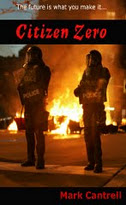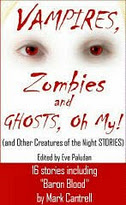Hell is where the heart is
The Devil's Lair is far too gruesome to be painted in mere gore, so don't expect 'torture porn' in this intelligently crafted fantasy, writes Mark Cantrell
Title: Devil's Lair
Author: David Wisehart
Price: 71 pence
Format: Kindle
Source: Amazon
ASIN: B003AOA4IQ
Authors Website: davidwisehart.com | http://kindle-author.blogspot.com
HELL is the destination for the four pilgrims depicted in David Wisehart’s Mediaeval novel, but they're not dead and they're not incarcerated for their sins – on the contrary their on a mission from God, as it were, but that doesn't make them any more virtuous than your average folk either.
The Devil's Lair is a thought-provoking and intelligent fantasy tale that does more than pay tribute to Dante, it follows in his footsteps and shows more than a passing familiarity with the subject matter. Clearly, Wisehart knows his period and his Dante.
In turn, we think we might know the realm of Hell, but it proves to be rather more than the ‘torture-porn’ gorefest our modern cultural expectations might demand. Yes, there’s plenty of blood and pain for the damned souls incarcerated in the Underworld, but the truth of Hell’s horrors are much more psychological in nature, more subtle, more severe, and much more intelligent than anything a schlock-horror mindset might favour. Wisehart avoids falling into the latter trap.
As with the vivid and detailed characterisation that quickly becomes a hallmark of the novel, the damned souls are there for their sins – of course, it’s par the course – but more than a few are held there by an inability to recognise said sins.
If only the usurer, for instance, would lay down his burdensome bag of gold, he might take flight from Hell, but he cannot see this weight of sin, only the gold he loves, and so he remains among the Damned.
Therein lies the trick of Hell, perhaps, that many of its inmates are there for a lack of self-awareness, an inability to look inside themselves and gain a greater understanding of what and who they are. Bound by vanity, by a love of gold, they prove their own demons far worse than the fallen angels that serve Lucifier.
Our four pilgrims are Hell-bound not out of vice but terrible virtue, if it can be said as such, for with Europe torn apart by war, with the pestilence of the Black Death sweeping the continent and laying waste to whole villages and towns, they are determined to wrest the Holy Grail from the Devil’s grip and save Europe from Apocalypse.
Led in spirit and the flesh by William of Okham, an excommunicated friar who has taken by a vow of poverty, their guide is Giovanni, who declares he has taken a vow of poetry, which is pretty much the same thing. An acolyte of Dante, he takes them through the netherworld, but it is Nadja, an epileptic tormented by visions who spurs them on in their quest for the Grail. Last but not least is Marco da Roma, a knight with a mysterious past, one that is hidden even from himself, who proves himself a more than worthy champion as they descend into the hellish pit.
Together, they must draw upon each other's strengths and even their weaknesses, to hold to trust and faith in the quest as they venture deeper into The Devil’s Lair. For all that you might expect, the lion’s share of the book deals with their travails in the living world, as they first seek the knight Marco, and then follow their reluctant protector through plague-ravaged Italy, to convince him of his new calling.
The book is all the stronger for delaying this venture into Hell, for in the course of the novel we gain a deeper understanding and familiarity of the characters: where they came from, who they are, the human weaknesses and foibles that trouble them, the strengths and virtues that will enable them to face the horrors deep beneath the Earthly realm of Man.
Wisehart, in this sensible dalliance, presents a detailed and vivid landscape, filled with the realistic depiction of the time and the age, every bit as convincing as the four characters at the heart of the story.
Given its theme, it might be tempting to call this a work of fantasy, but on the other hand given it Mediaeval setting, its homage to Dante, and the grip that religion had on how individuals saw their world in those bygone days, it might equally be called a historical novel.
Either way, Wisehart has woven a compelling and engaging story that will move its readers every bit as much as it provokes thought. It might even teach a thing or two about an era that is far removed from our own time, one that is – at least on the surface – more rational and reasoned.
Mark Cantrell,
Stoke-on-Trent,
3 April 2011
Copyright (C) April 2011. All Rights Reserved.
Category: REVIEWS




























0 comments:
Post a Comment